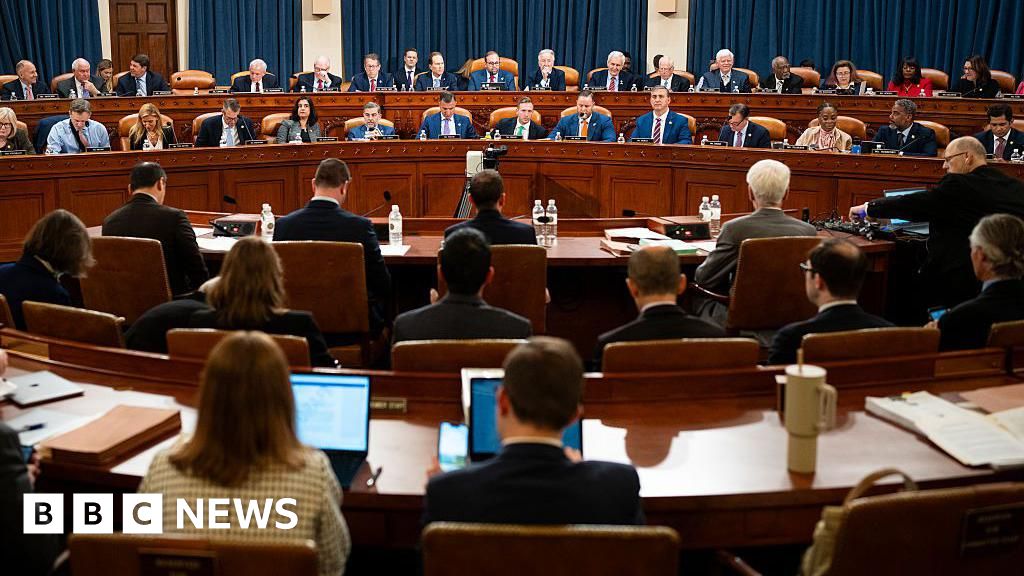Topline
All three major U.S. stock market indexes rose Monday afternoon, following an earlier selloff sparked by long-dated Treasury yields surpassing the 5% mark after the financial ratings agency Moody’s downgraded the U.S. government’s credit rating late last week, citing rising debt and interest payment ratios.
Moody’s lowered the U.S. government’s credit rating on Friday.
Key Facts
The Dow Jones Industrial Average added 143 points, or 0.3%, and the S&P 500 increased slightly (0.1%) as of around 2 p.m. EDT, though the Nasdaq (down 0.1%) pared back losses each index fell between 0.5% and 1% earlier in the day.
A broader selloff earlier Monday was led by Tesla, whose shares have dropped by 2.7%, and declines for Apple (1.3%), Palantir (2.4%) and AMD (2.3%) pulled the tech-heavy Nasdaq in the negative.
Other stocks like UnitedHealth (6.8%), Microsoft (0.9%), Merck (1%), and Visa (0.8%) throughout the day and boosted a rebound for each index.
Yields for 30-year U.S. Treasury notes breached the 5% mark for the first time since April 9, shortly after President Donald Trump announced wide-reaching reciprocal tariffs on U.S. trade partners, while reaching its highest mark since October 2023, when the Federal Reserve attempted to stabilize inflation by sharply raising interest rates.
Aside from the brief spike in October 2023, 30-year yields last touched 5% in 2007.
Here’s Why 30-Year And 10-Year Treasury Yields Are Up—and What That Means
An increase in yields for long-term Treasury notes tends to coincide with concerns among investors about the long-term effects of the growing national debt, which sits at $36.2 trillion as of May 15, according to the Treasury Department. In Moody’s announcement to cut the U.S.’ credit rating last week, the agency said its downgrade “reflects the increase over more than a decade in government debt,” while the U.S.’ interest payment ratios are “significantly higher than similarly rated sovereigns.” As yields rise, borrowing costs for consumers and businesses also increase, with likely higher interest rates for mortgages, credit cards and other loans. Larger bond yields also signal lower bond prices as investors seek out bonds with a higher yield.
Will The Federal Reserve Cut Interest Rates In 2025?
Atlanta Fed president Raphael Bostic told CNBC on Monday he’s “leaning” toward one interest rate cut this year, though he noted it would “take time” as the economy is “in a lot of flux, policy is in flux, there’s a lot of uncertainty.” Bostic said policy makers would need to “wait three to six months to start to see where this [uncertainty]
settles out.” New York Fed president John Williams, who spoke Monday at a Mortgage Bankers Association-led conference, reportedly said the Fed would likely take beyond July to better project an outlook for the economy. Traders expect the Fed to keep rates between 4.25% and 4.5%—where they’ve remained since December—with 91.6% odds that rates are unchanged at the Fed’s next meeting on June 18, according to CME Group’s FedWatch Tool.
What Do We Know About The Moody’s Downgrade?
On Friday, Moody’s downgraded the U.S. government’s credit rating from Aaa—its top prime grade—to Aa1 or high grade, which is one notch below. With its downgrade, Moody’s became the last of the three big ratings firms to lower the U.S. government’s credit rating from the top level. The agency said successive presidential administrations and Congress have “failed to agree on measures to reverse the trend of large annual fiscal deficits and growing interest costs.” However, despite the downgrade, Moody’s changed the U.S.’s outlook from negative to stable, noting: “The US retains exceptional credit strengths, such as the size, resilience and dynamism of its economy and the role of the US dollar as global reserve currency.”
What To Watch For
The ratings downgrade and Moody’s concerns about the government’s debt come amid a Republican effort to pass Trump’s signature policy agenda, which will enact $4.5 trillion in tax cuts over 10 years. According to an estimate published by the nonpartisan Committee for a Responsible Federal Budget, the GOP’s big budget bill will add $3.3 trillion more to the U.S. federal debt over the next 10 years. Despite opposition from conservative deficit hawks, the House Budget Committee voted to move the bill forward on Sunday night.
Further Reading
Moody’s Slashes United States’ Credit Rating Over Rising Government Debt And Interest (Forbes)











